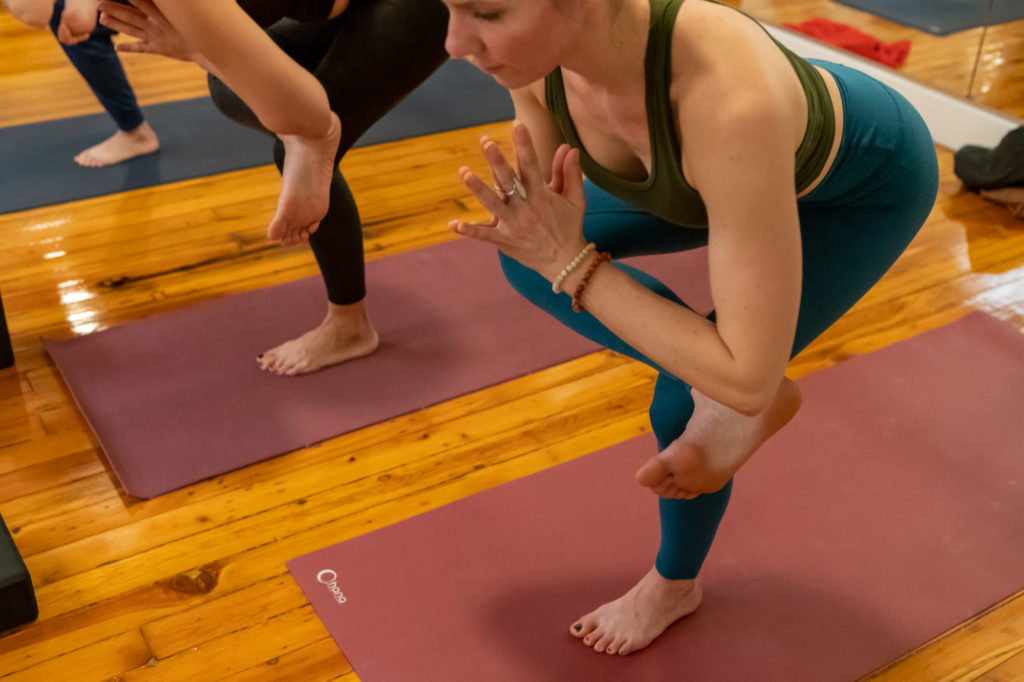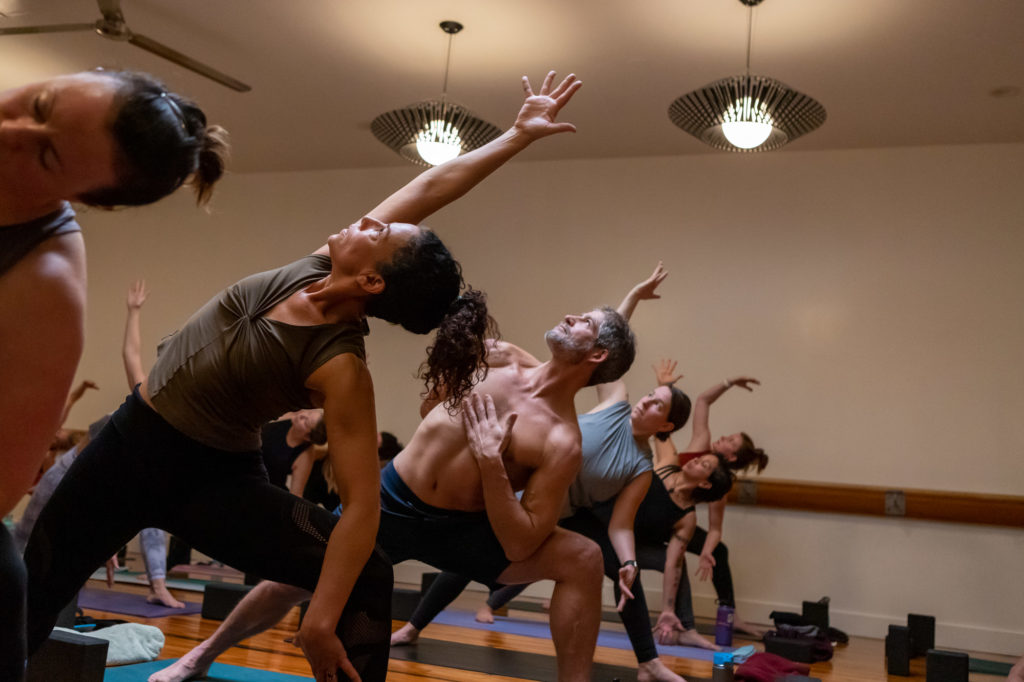Yoga: a word that for some invokes images of affluent Westerners hurrying off to chic studios after a long day of work. For others, perhaps it conjures ideas of spiritual gurus bowing in ritualistic gratitude to the sun every morning.
While these conceptions of yoga aren’t necessarily wrong, they are at best incomplete. Yoga is – and always has been – a whole and complete way of life.
What Does Yoga Mean?
Originating over 10,000 years ago, the definition of yoga has evolved over time but the most basic translation of this Sanskrit word remains today: union or unity. More specifically, the unity of mind, body, and spirit.
To receive the ancient, healing benefits of yoga, we must first be willing to look beyond our modern interpretation of what we perceive yoga to be and consider what it actually is – the expansion and unification of consciousness.
We have a narrow depiction of yoga in Western culture, one that centers around yoga as a form of physical exercise and movement. However, the ancient scriptures pertaining to yoga don’t mention a physical component at all – rather, they discuss yoga as a holistic practice, one that does not and cannot separate yoga from life as a whole.
From Patanjali’s Eight Limbs of Yoga, we are given the first systematic presentation of yoga which provides us with a basic framework on how to live a more meaningful and purposeful life. The Eight Limbs remind us that there is no one path to yoga or unity, there are several.
Together, the Eight Limbs create a system by which one can reach the final state of samadhi, or bliss or enlightenment. This is the ultimate goal of the yogi – to exist in a state of bliss, here and now, regardless of the external circumstances.
This state of being exemplifies the transcendent quality of yoga – by integrating all aspects of our being, we are able to find complete union with the divine. Yoga, therefore, is living amongst that completeness.

Yoga and The Human Experience
When we practice yoga we are divinity in human form, personifying the completeness of existence. So, here is the fundamental principle necessary for understanding yoga: until we learn to accept life as a whole, we have not truly learned yoga.
Yoga allows us to transcend the human experience. Yoga causes us to awaken to our being. Through yoga, we can find freedom. Freedom from the self, freedom from the burdens of human existence.
When we separate ourselves from our egos, the stories we tell ourselves, our pasts, our traumas, all of the things that hold us back, we can experience true samadhi or bliss.
As human beings, we are consciousness incarnate. When we strip away the vessels of our physical bodies and all of the structures and institutions that make up the modern world, all we have left is consciousness – the pure, ethereal essence of who we really are. Our soul, the energy we put out into the universe.
As humans, we are physical manifestations of this energy – a unique slice of an infinite source. However, somewhere along the way humanity has become far too obsessed with the physical world – our bodies, earthly possessions – to such a degree that too many, it is the only reality that exists.
Modern Yoga and The Body
This has also limited our modern understanding of yoga. Though the physical practice of yoga – asana, Patanjali’s third limb of yoga – is just one stop on the path to bliss, it is the one we are the most intimately familiar with in modern culture.
From Vinyasa to Bikram to power yoga, many styles of the practice were intentionally designed to challenge, tone, and push the physical body which remains top of mind for many of us today.
While it is just one facet of yoga, the benefits of asana are undeniable – by combining posture and breath with movement we are able to strengthen, lengthen, and tone our muscles safely and effectively. Through asana, our aim is to get the vessels of our physical body in the healthiest state possible.
This is an absolutely essential component in our ability to receive the benefits of yoga and achieve bliss – pursuing personal and spiritual growth requires a healthy body and mind. Attaining a state of yoga – unity consciousness – requires a solid foundation, one that is firmly rooted in the tangible here and now.
Our physical bodies are simply the containers of our experiences – every trauma and unresolved feeling tucks itself away somewhere inside of us, oftentimes presenting itself in the future as inexplicable pain in the physical body.
When we combine the breath with physical postures through asana, we are able to effectively move energy throughout the body – anything stagnant or stuck in the container of our spirit has the opportunity to be released.
Our bodies are collectors of our pasts – asana is how we root ourselves in the here and now. Through intentional movement, we are able to escape the confines of our own minds, release pain, and find healing.
The Benefits of Yoga and The Mind
While asana is an incredible way to condition the physical body, it also works to condition the mind. Imagine holding a chair pose for a long period of time. At first, you feel strong – heck, it even feels easy! Then, the muscles in your legs and glutes turn on and it starts to burn. Now, they’re in a full-on quiver.
What starts to happen? Your mind takes the driver’s seat – and here is where we experience the benefits of yoga outside the physical body. Instead of giving in to the intensity of it, we use our resolve to persevere. We maintain our present moment awareness by staying engaged, but we keep our composure by remembering that the pain is just a sensation, something temporary that we choose to simply observe rather than judge.
We acknowledge the discomfort and choose to hang in any way. By doing so, we have created a new experience for ourselves. We have heightened our level of awareness. We have raised and expanded our consciousness: yoga.
Yoga and The Nervous System
Another incredible benefit of yoga is its ability to soothe and regulate the Central Nervous System. By consciously engaging with the breath through pranayama – Patanjali’s fourth limb of yoga – we are able to signal to our bodies that we are safe. That we are present, alive, and open to receiving.
Utilizing and controlling the breath through various breathwork techniques or when practicing physically through asana is quite literally how we invite source into our life – through respiration, we are able to drink in the universal life force energy directly.
Breath is both nourishing and illuminating. Depending on the type, pranayama can either calm or invigorate the body: we can either engage a cooling breath that works to relax and prepare the body for stillness, or one that creates internal fire, heat, and energy.
While various forms of breathwork create different experiences and sensations in the body, they all work to cultivate awareness. Awareness of the body, awareness of the spirit, and awareness of the present moment.
Pranayama creates ease and flows in our lives so that we can find a deep connection with our practice, the world around us, and ourselves.
Benefits of Yoga for Men

Let’s go back to our initial observations about how yoga comes across to the western world, at least on a surface level. Remember the images of upscale studios and bowing gurus? It doesn’t exactly scream masculinity, does it?
This is why so many contemporary men disregard the idea of yoga altogether – their perception of what yoga is prevents them from exploring it on a deeper level. Yet, despite their hesitations, the benefits of yoga for men are undeniable and worth exploring.
It’s no secret that as a society we are chronically stiff and inflexible – we sit at computers all day, we constantly stare down at our phones, and we suffer from rampant stress that causes us to repeatedly tighten and clench our muscles unknowingly.
And it should also be no surprise that men have been particularly hard-hit by this epidemic of tightness and inflexibility – in the patriarchal society we operate in, many men have become hyper-focused on embodying masculine energy in all aspects of their lives. It even shows up in their exercise preferences, with most men opting for high-intensity, high-impact activities like boxing and lifting heavy weights where they can more openly exert their masculine identities.
The reality is, all of this intense physical exercise and stress without properly caring for the body can actually create more harm than good. Performing harsh, concentric movements over and over again without proper stretching and release can create spinal inflexibility, which is only exacerbated by our technology-focused lifestyles.
This constant contraction of the body adds up over time, leading to serious ailments such as inflammation and even long-term injury. While it might not appear as “challenging” as a Crossfit session, yoga simply challenges us in different ways – rather than focusing solely on physical strength and fortitude, it requires a sort of inner strength and vulnerability. A willingness to accept and be with ourselves as we are in this moment, without judgment.
The benefits of yoga for men go far beyond the physical realm. By allowing the muscles to properly relax through intentional stretching and breathing exercises, all of the intensity from the constant stress and exertion can be mitigated. If we do less, we can observe more. We can feel more. But in a culture that has taught men to suppress feelings and emotions at a very young age, this can be extremely uncomfortable to do.
Benefits of Yoga are for Everyone
If more individuals, regardless of gender, were open and receptive to experiencing yoga, the collective consciousness would be raised tremendously. In this way, we could create a more awakened world.
In a world of constant contraction, yoga is how we experience expansion – the expansion of the body through asana, the expansion of the breath through pranayama, and the expansion of consciousness through samadhi.
Unlike our physical bodies, our consciousness can only expand, never contract. Through yoga, one can experience the pure expansiveness of existence.
Want to see what the benefits of yoga feel like in your body? Get access to 14-days of unlimited online classes, no credit card required. Sign up today!